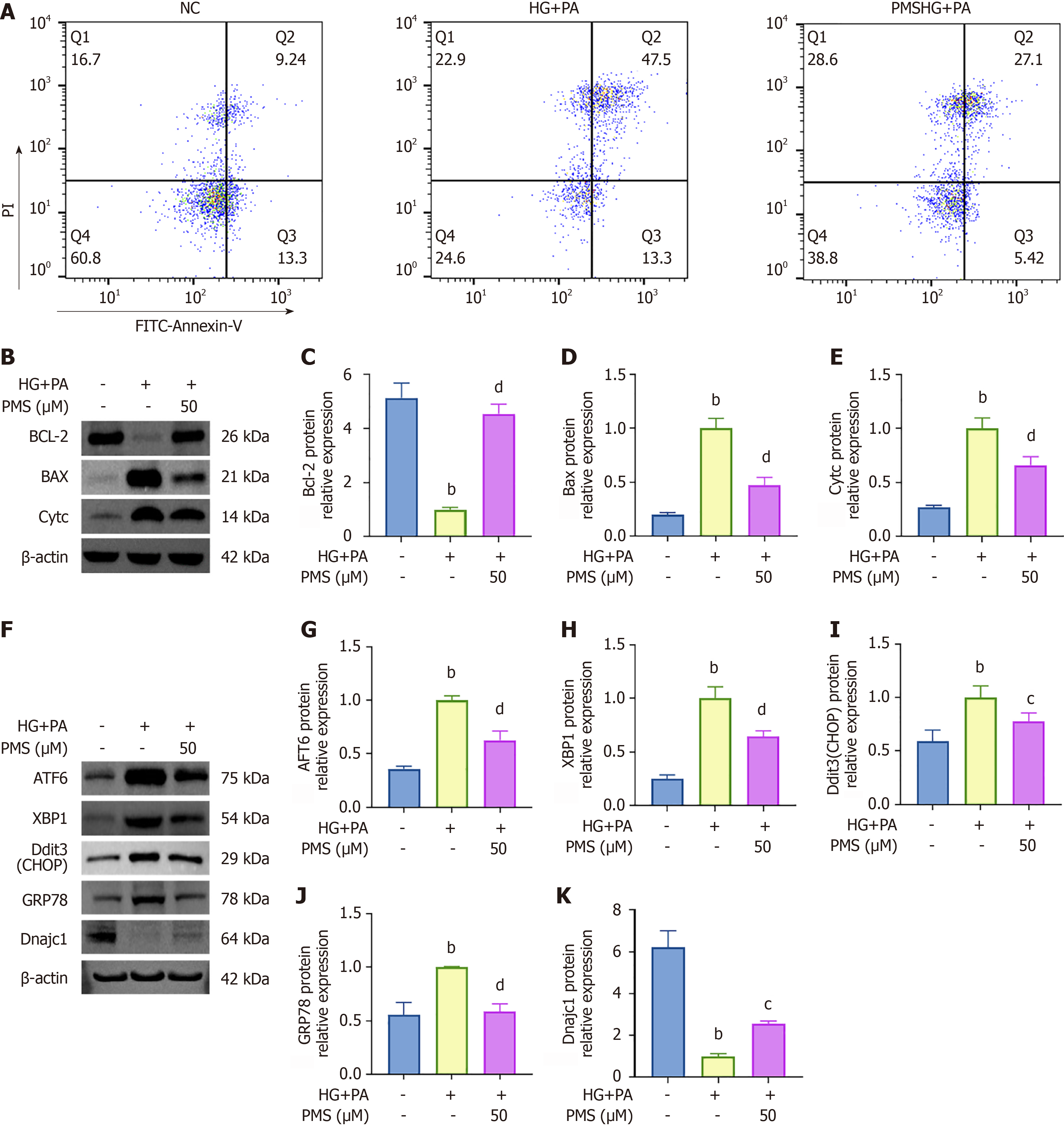Copyright
©The Author(s) 2025.
World J Diabetes. Feb 15, 2025; 16(2): 99053
Published online Feb 15, 2025. doi: 10.4239/wjd.v16.i2.99053
Published online Feb 15, 2025. doi: 10.4239/wjd.v16.i2.99053
Figure 3 Validation of the impact of plantamajoside intervention on apoptosis and endoplasmic reticulum stress in high glucose + palmitic acid-induced pancreatic β-cells.
A: Flow cytometry results indicate that plantamajoside (PMS) intervention reduced the rate of apoptosis; B-E: Western blot results showing that PMS intervention upregulated the expression of Bcl-2 and downregulated the expression of Bax and CytC; F-K: Western blot results revealing that PMS intervention upregulated the expression of Dnajc1 and downregulated the expression of ATF6, XBP1, Ddit3 (CHOP) and GRP78. n = 3 per group. aP < 0.05, bP < 0.01 vs the normal control group; cP < 0.05, dP < 0.01 vs the high glucose (HG) + palmitic acid (PA) group.
- Citation: Wang D, Wang YS, Zhao HM, Lu P, Li M, Li W, Cui HT, Zhang ZY, Lv SQ. Plantamajoside improves type 2 diabetes mellitus pancreatic β-cell damage by inhibiting endoplasmic reticulum stress through Dnajc1 up-regulation. World J Diabetes 2025; 16(2): 99053
- URL: https://www.wjgnet.com/1948-9358/full/v16/i2/99053.htm
- DOI: https://dx.doi.org/10.4239/wjd.v16.i2.99053









